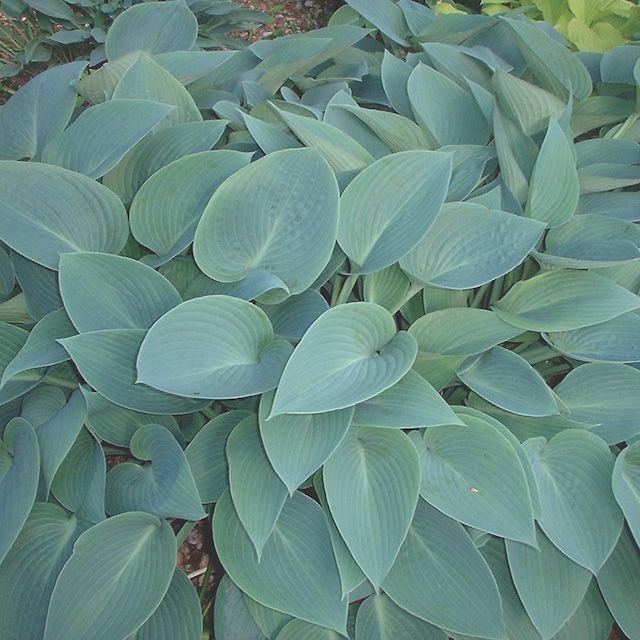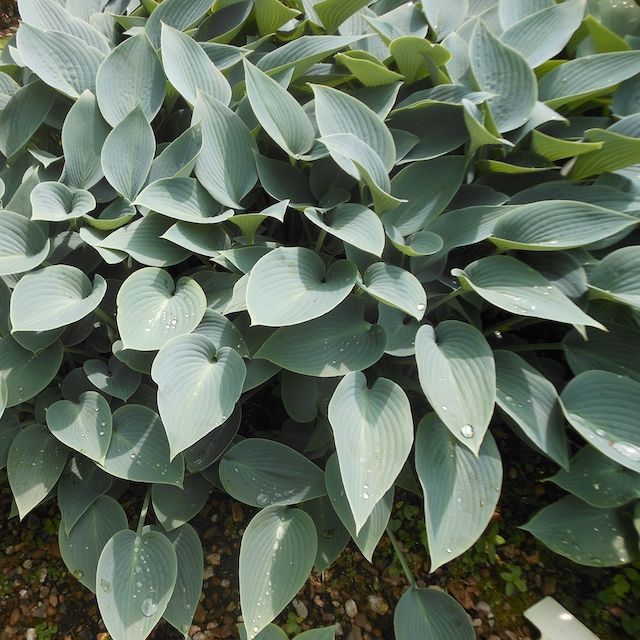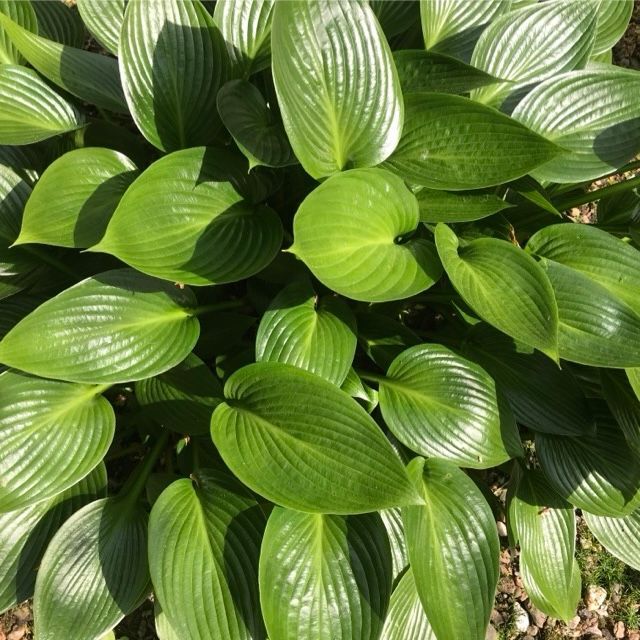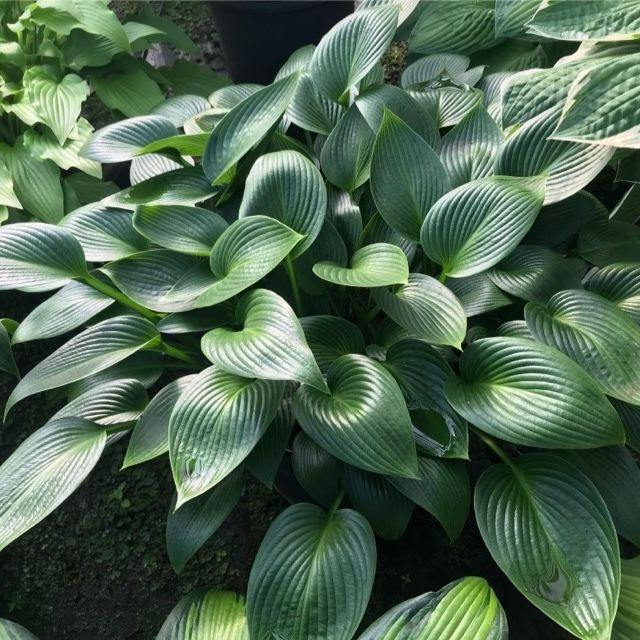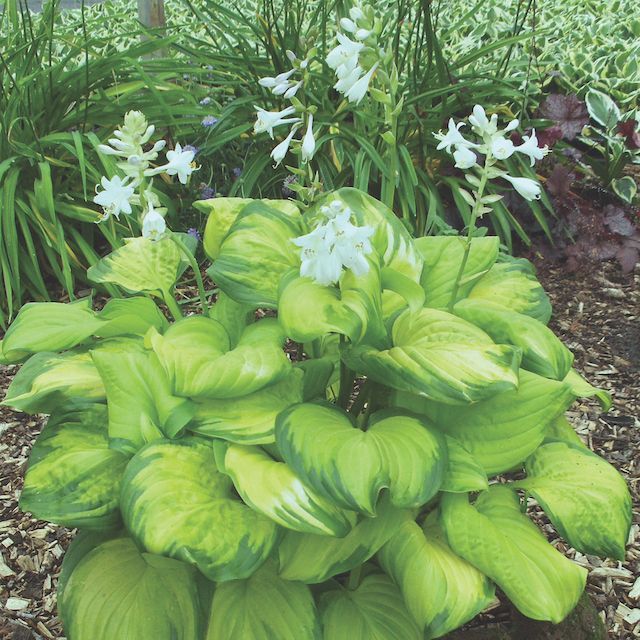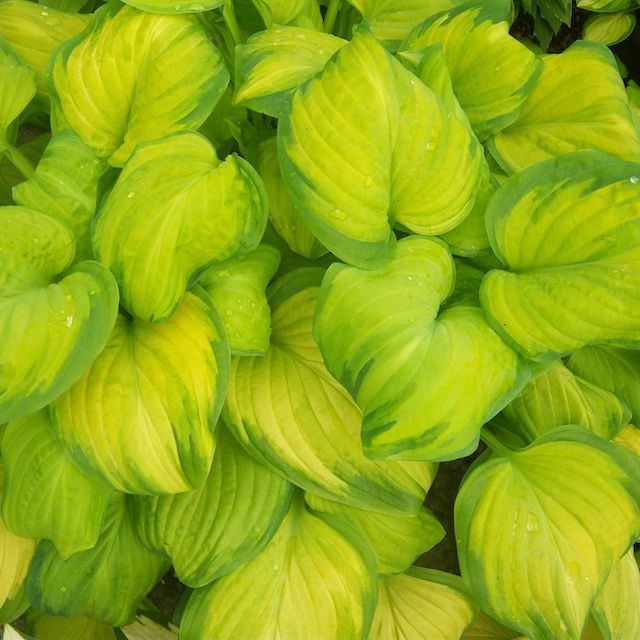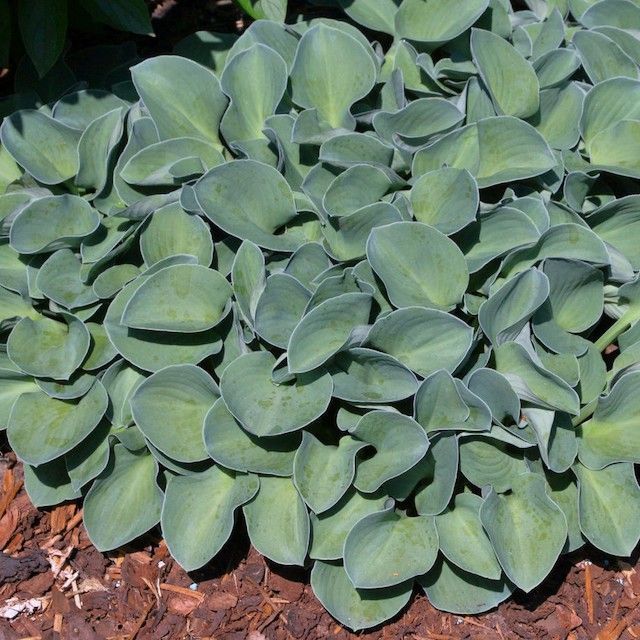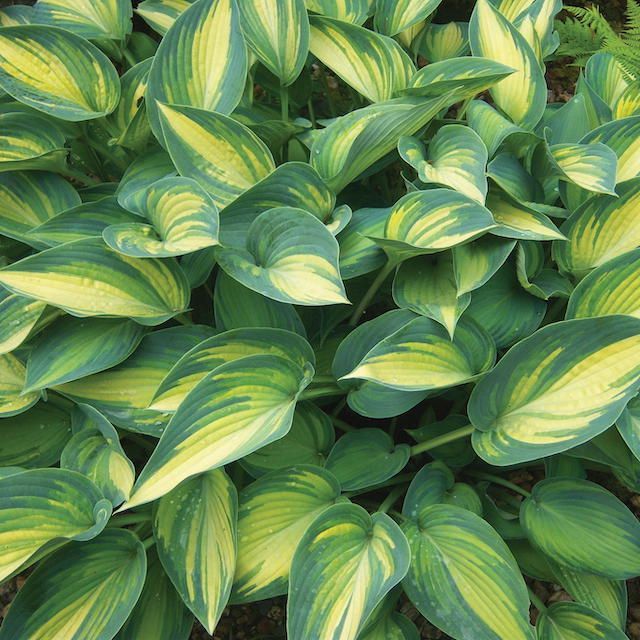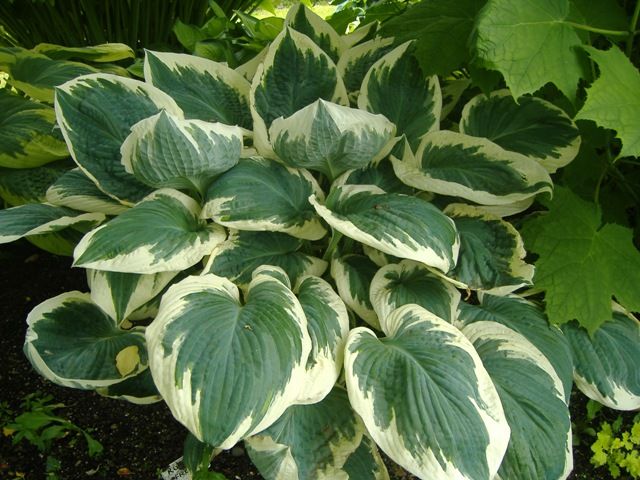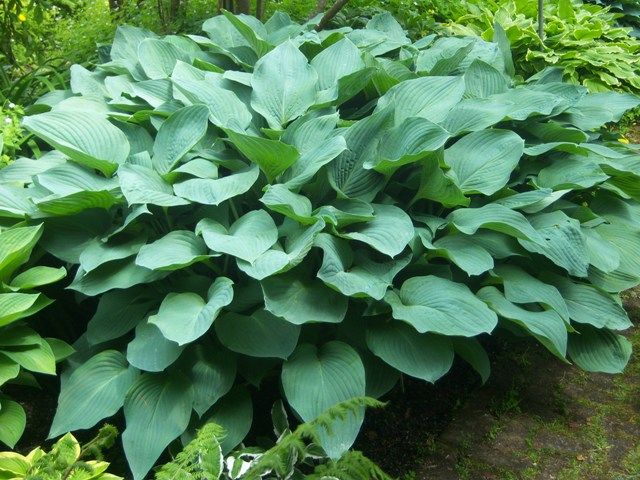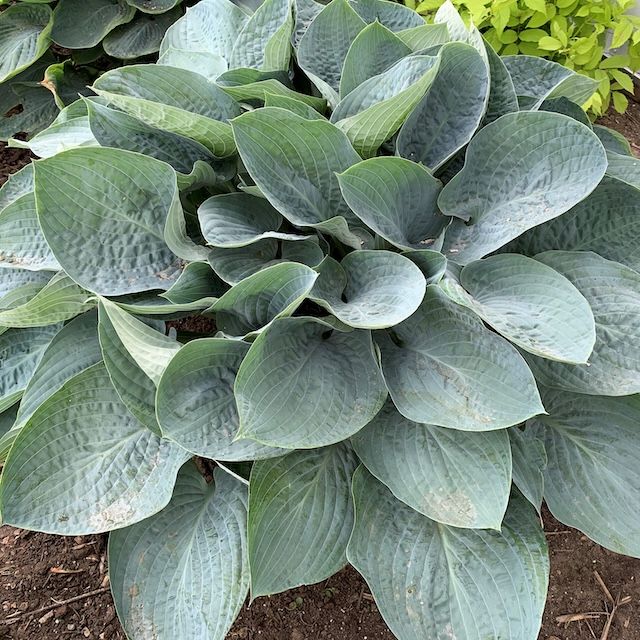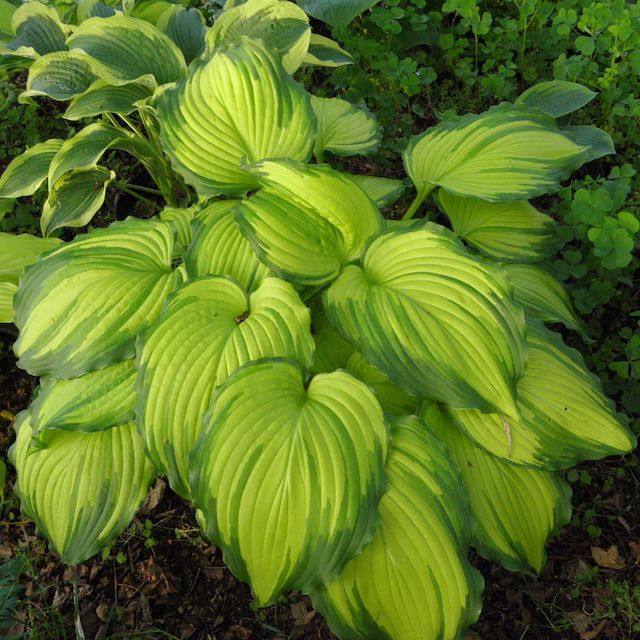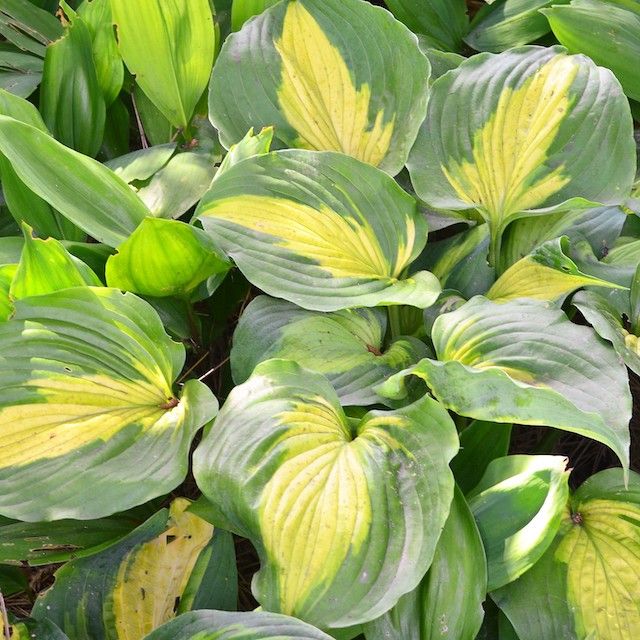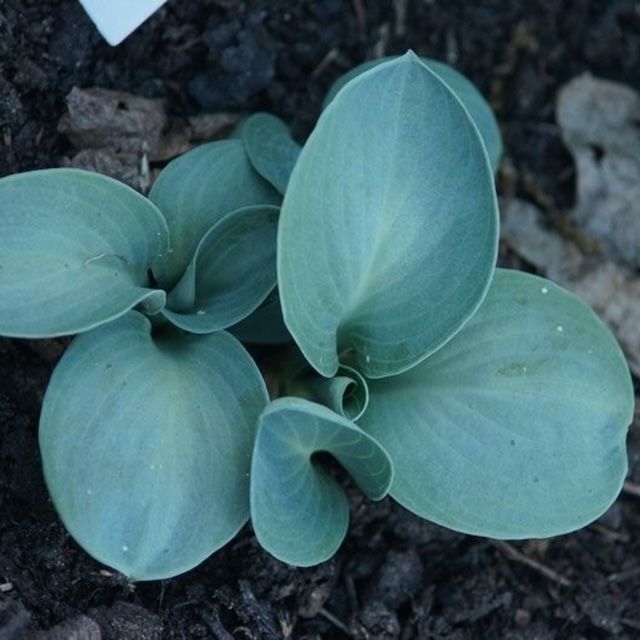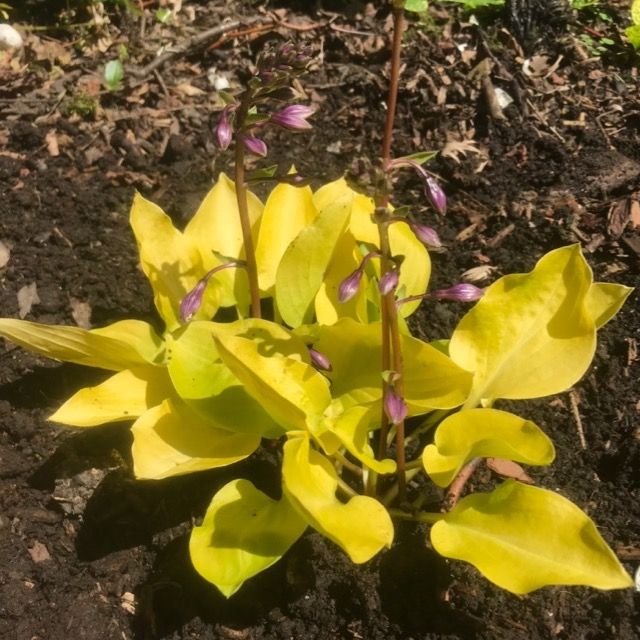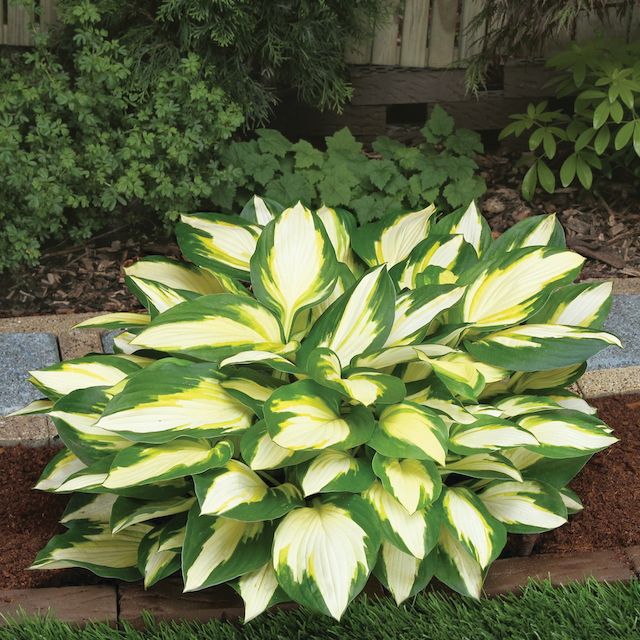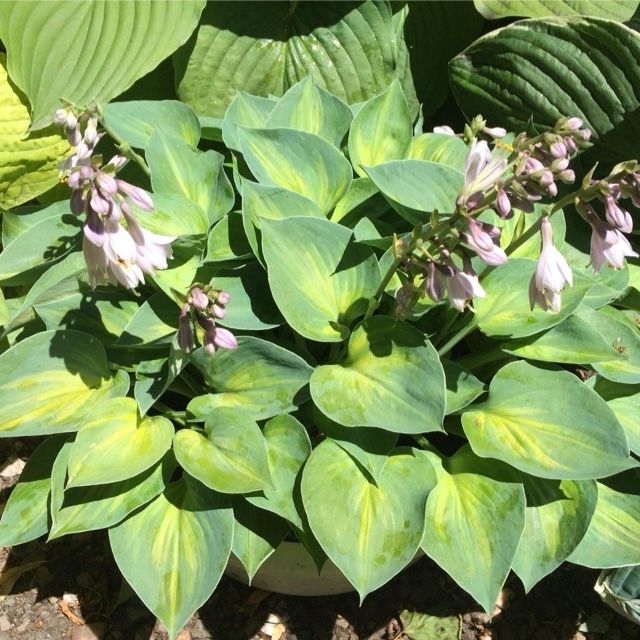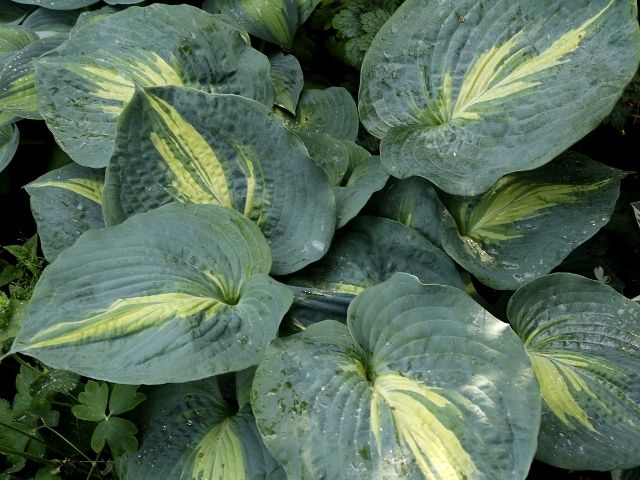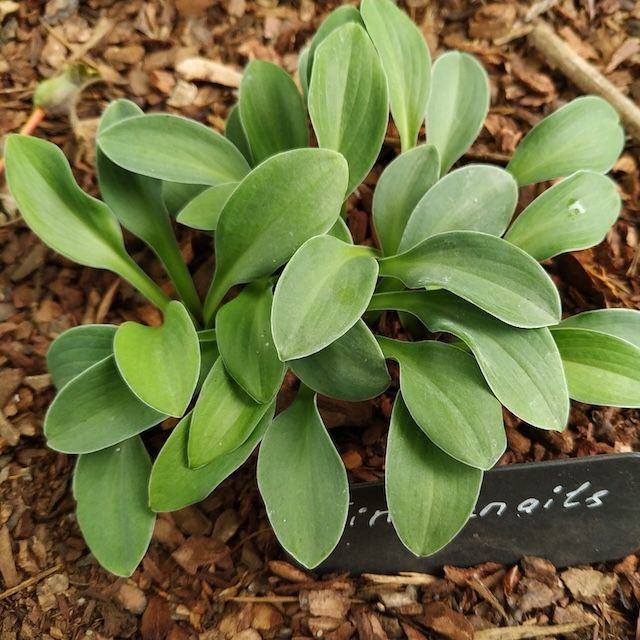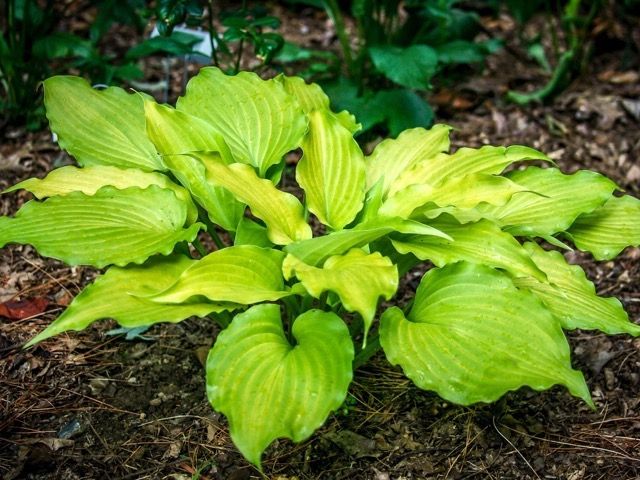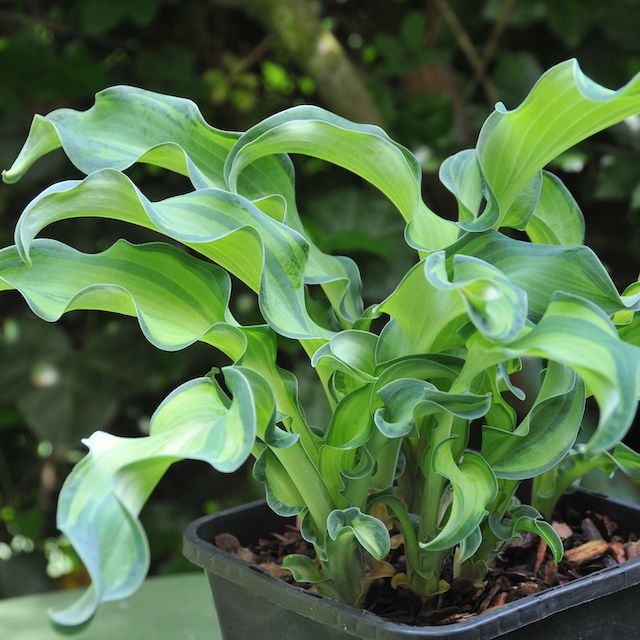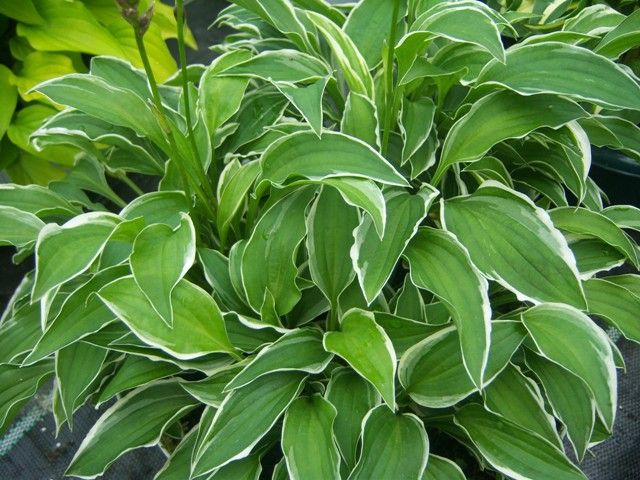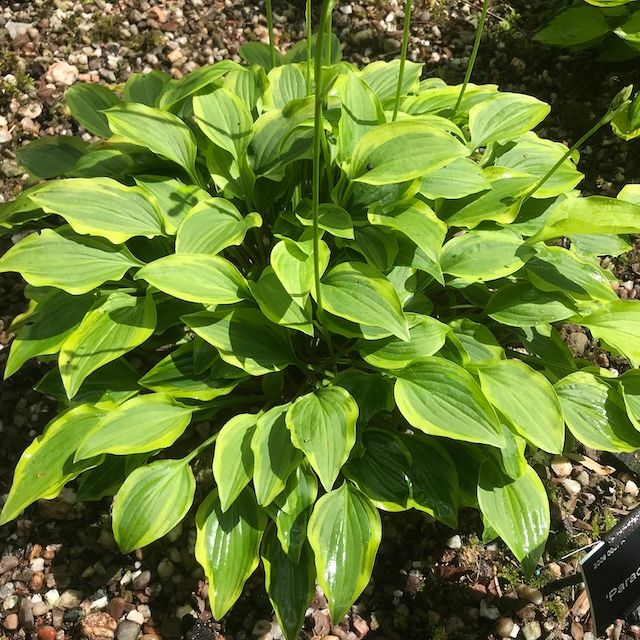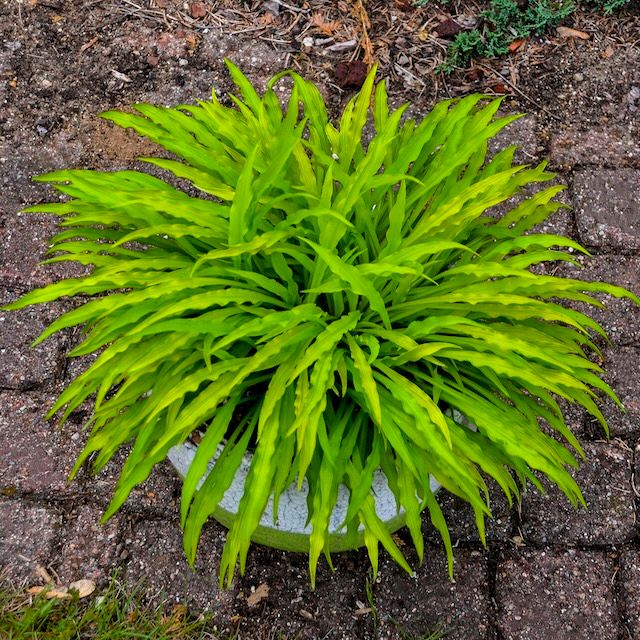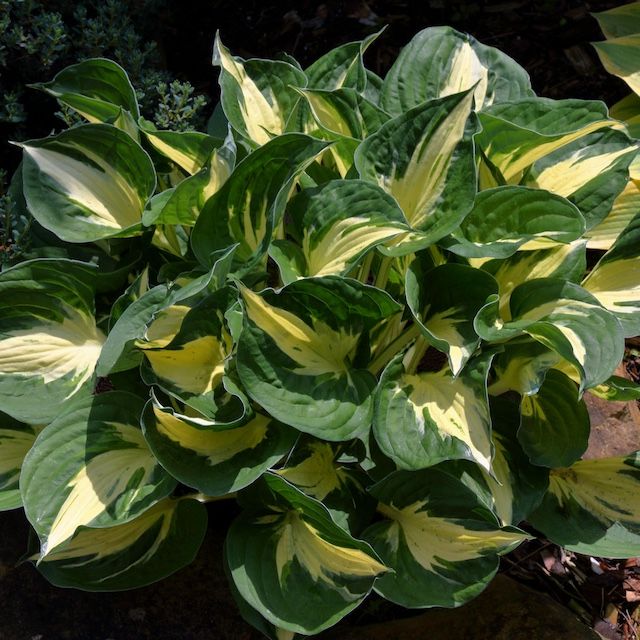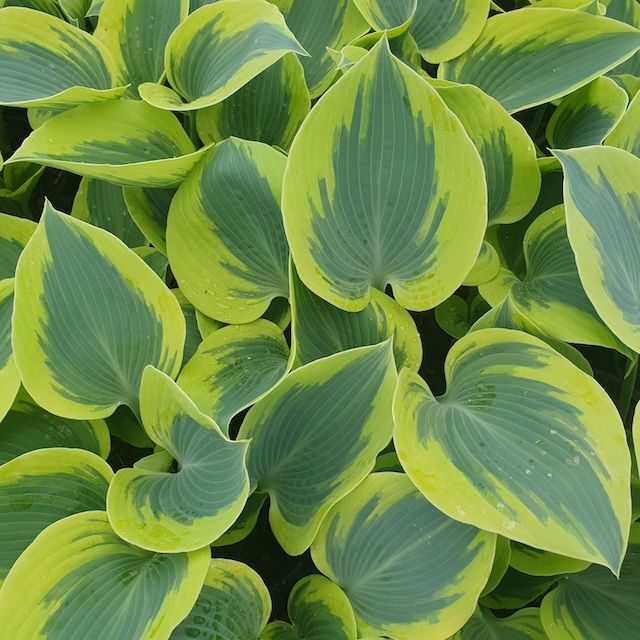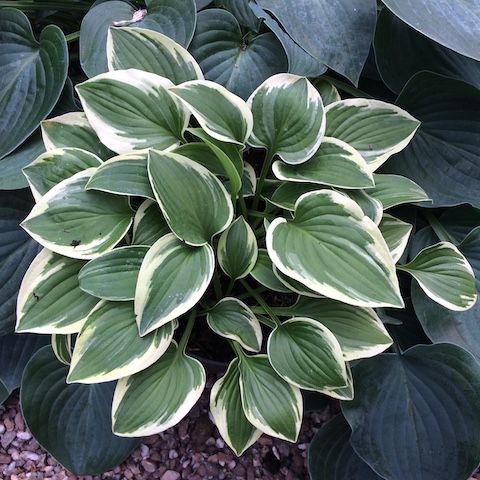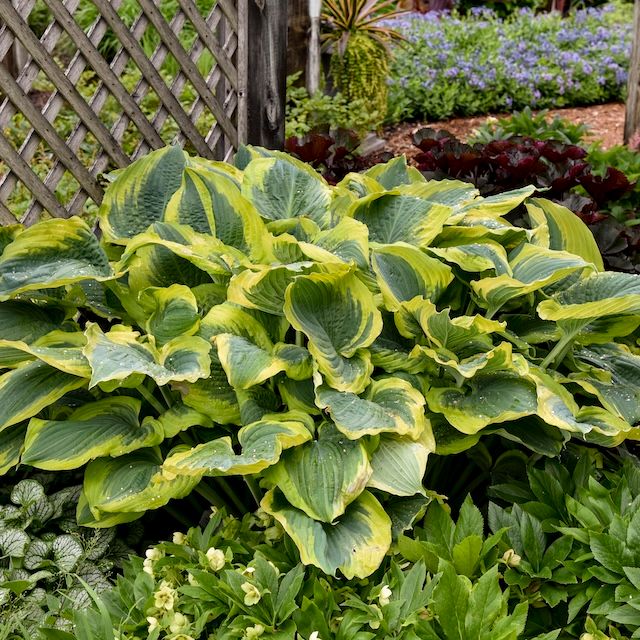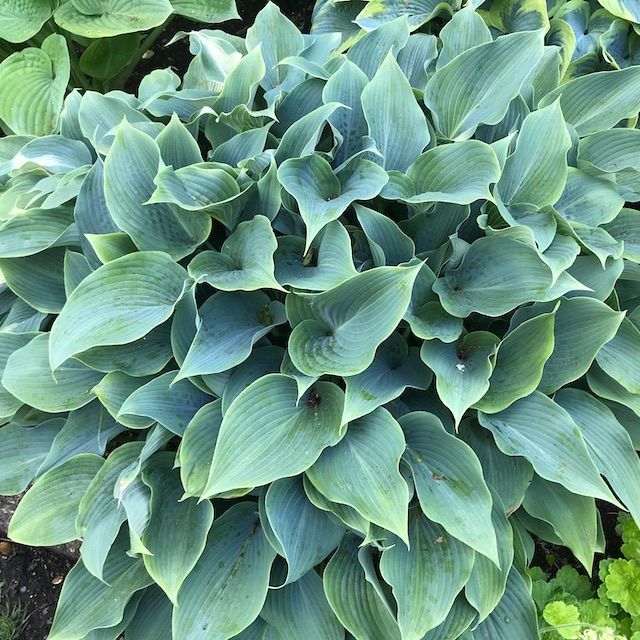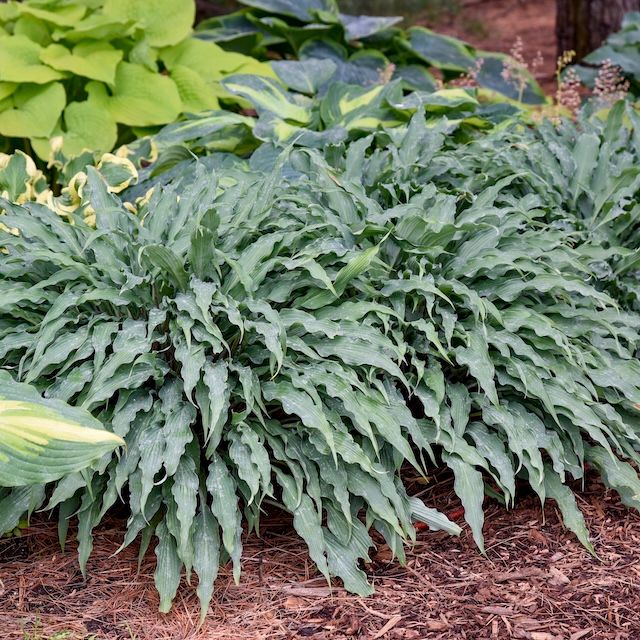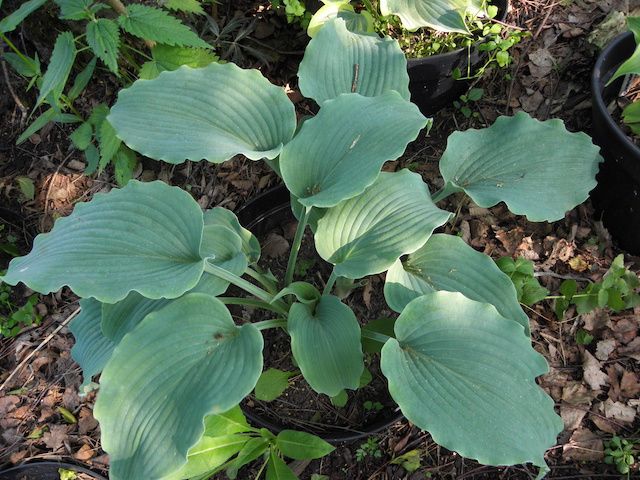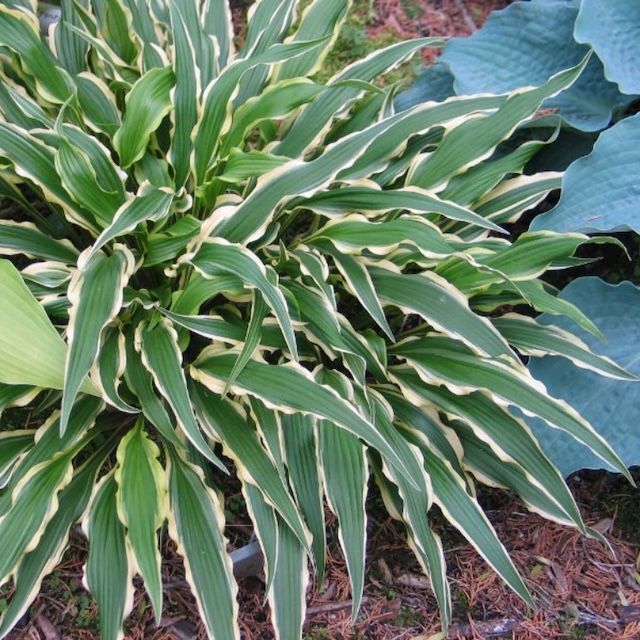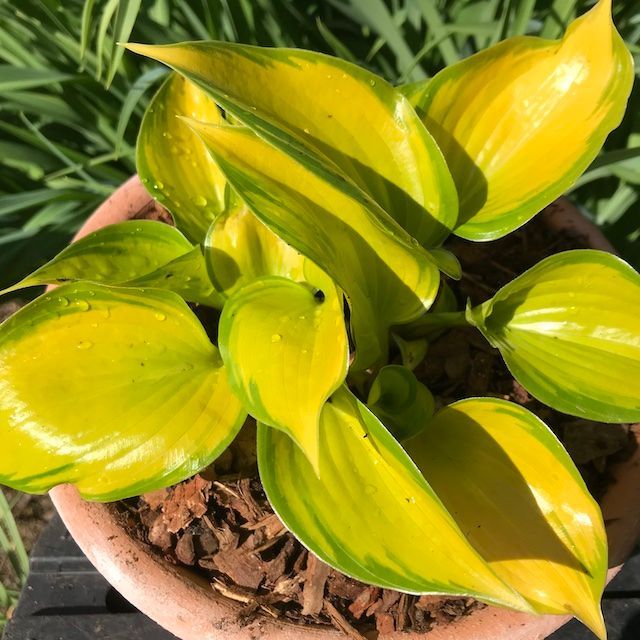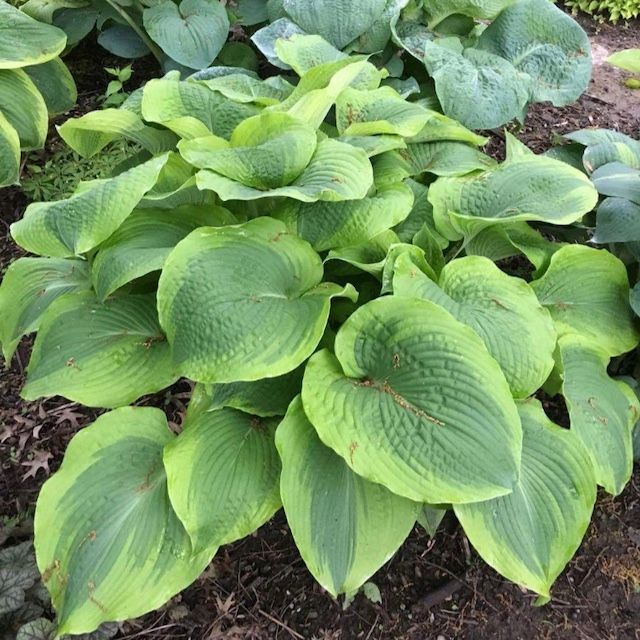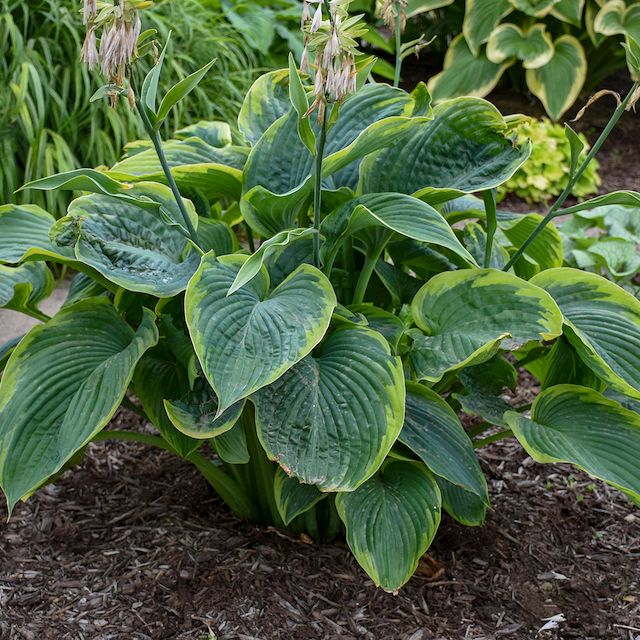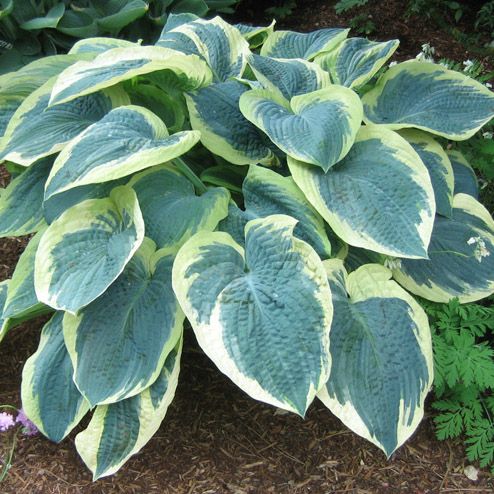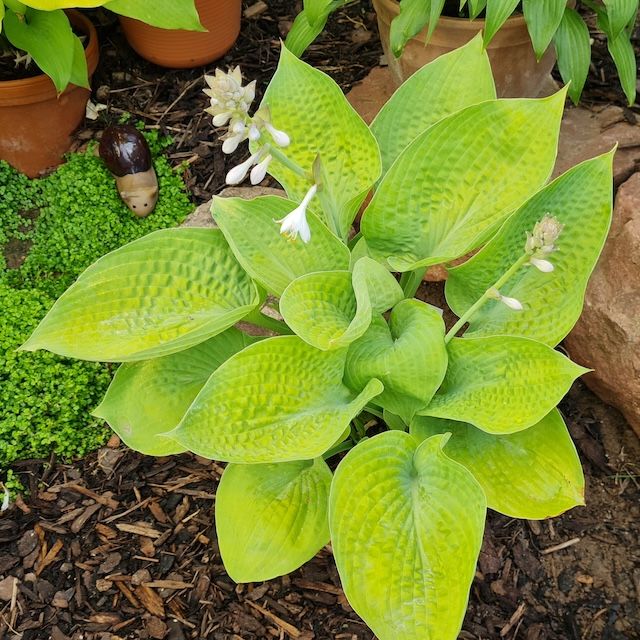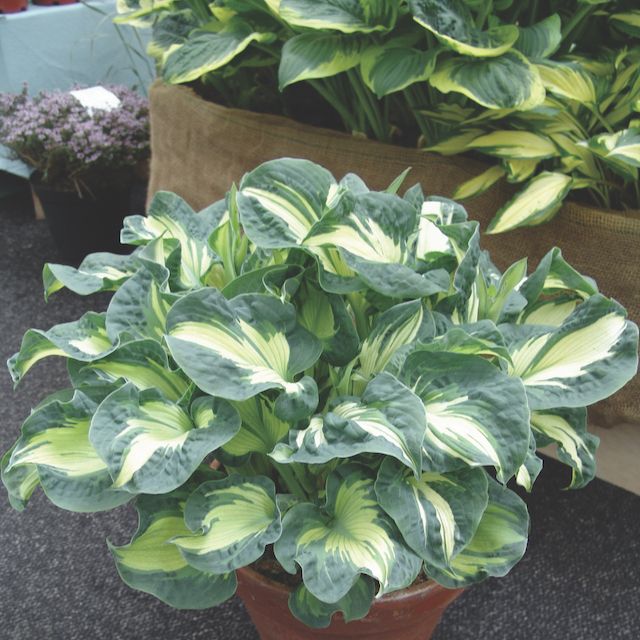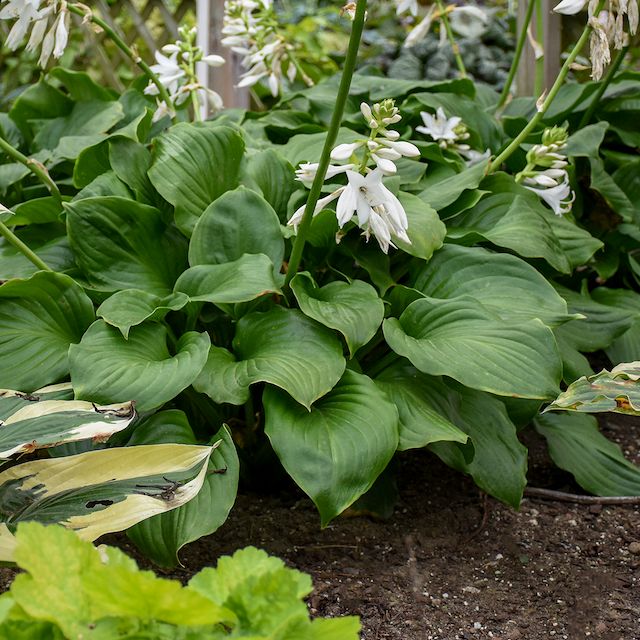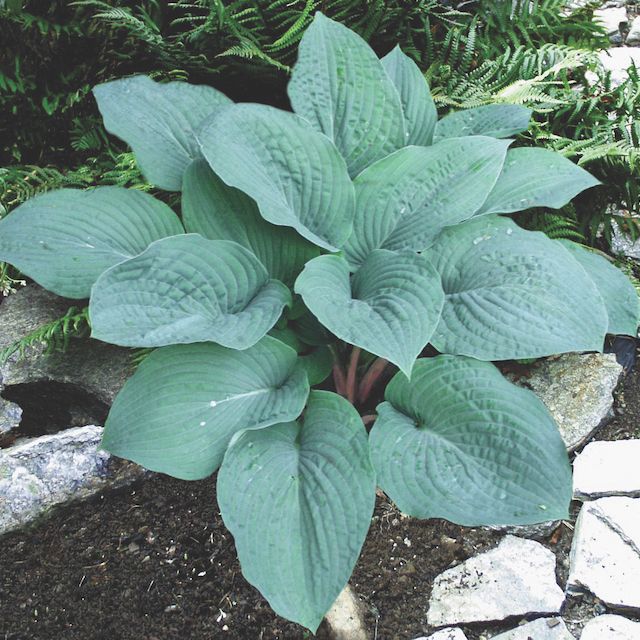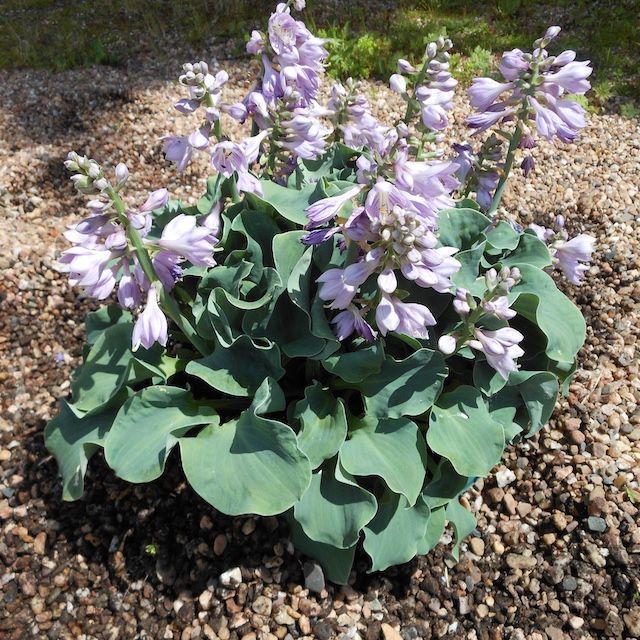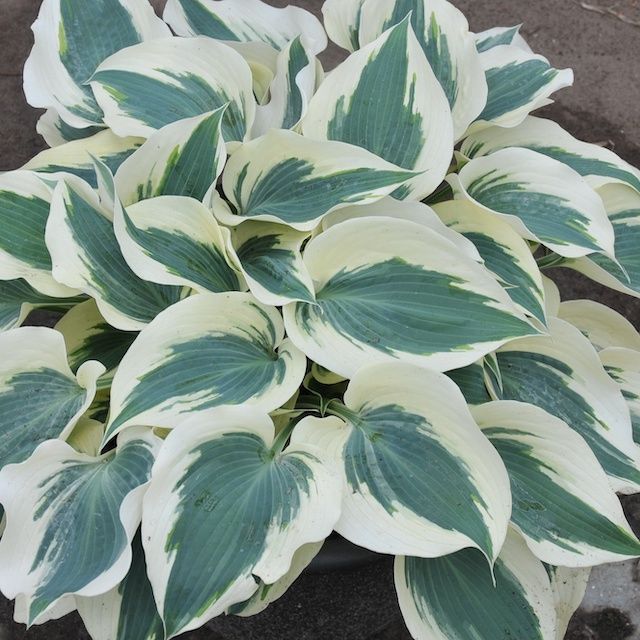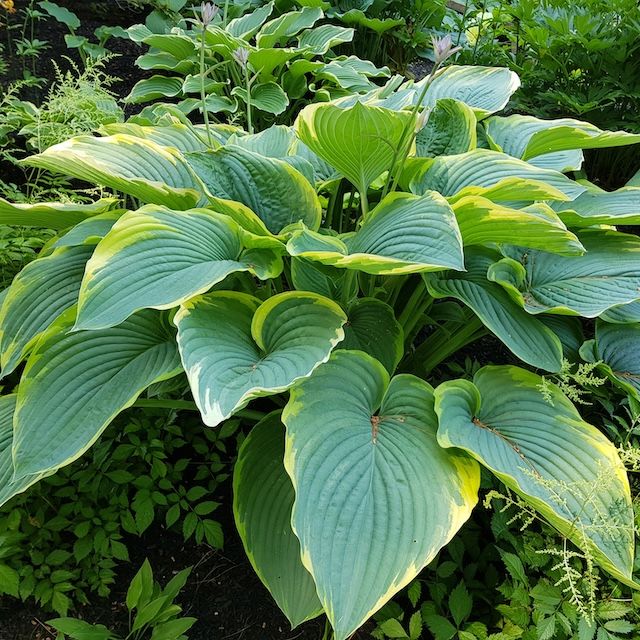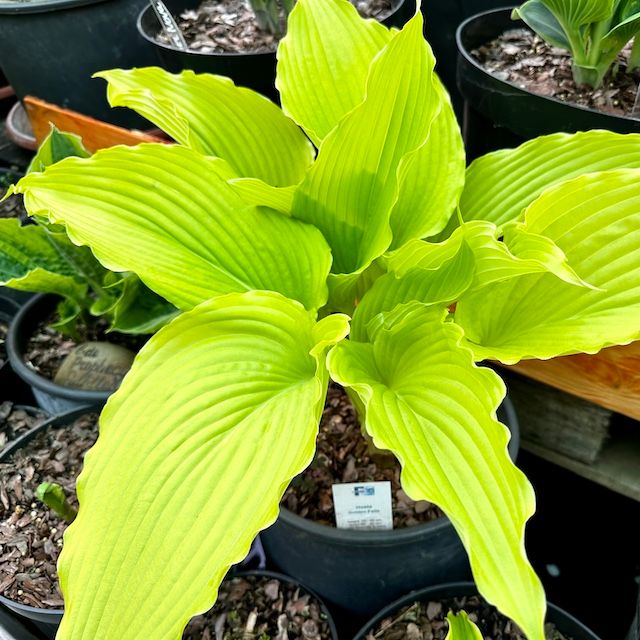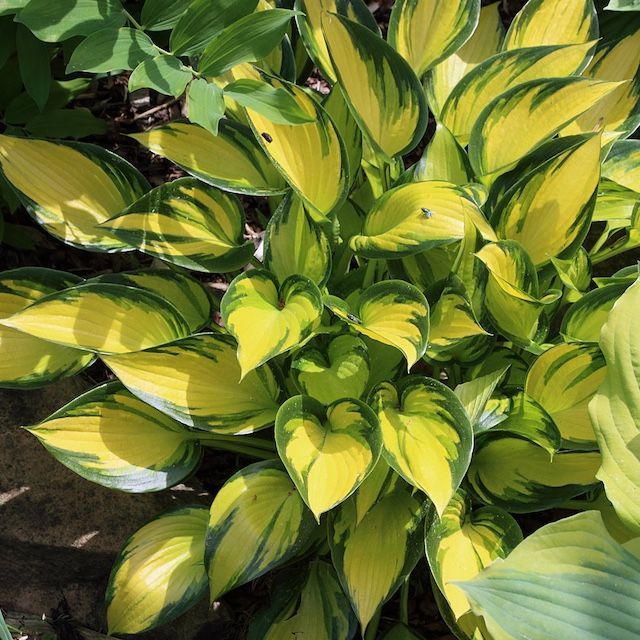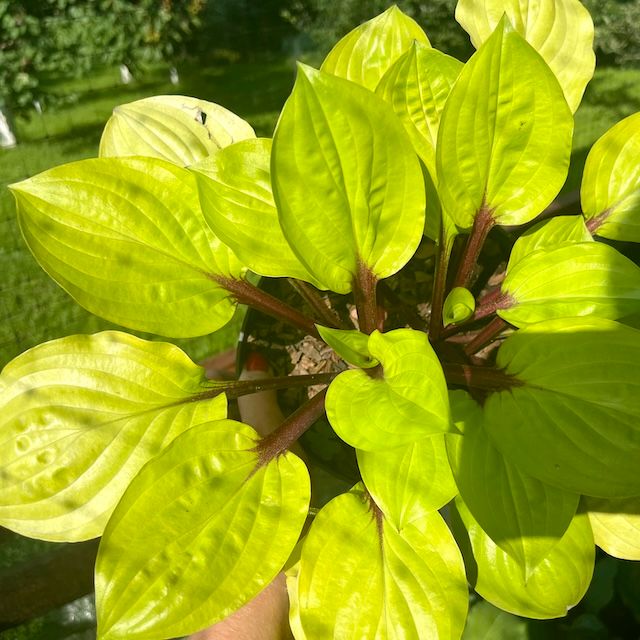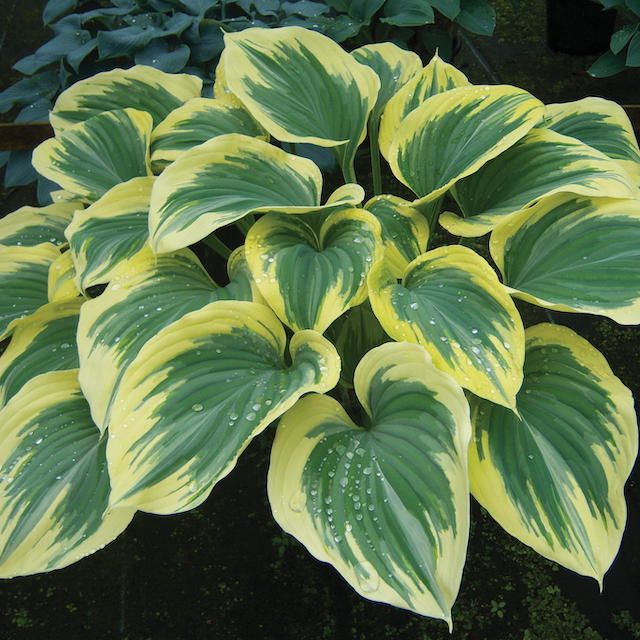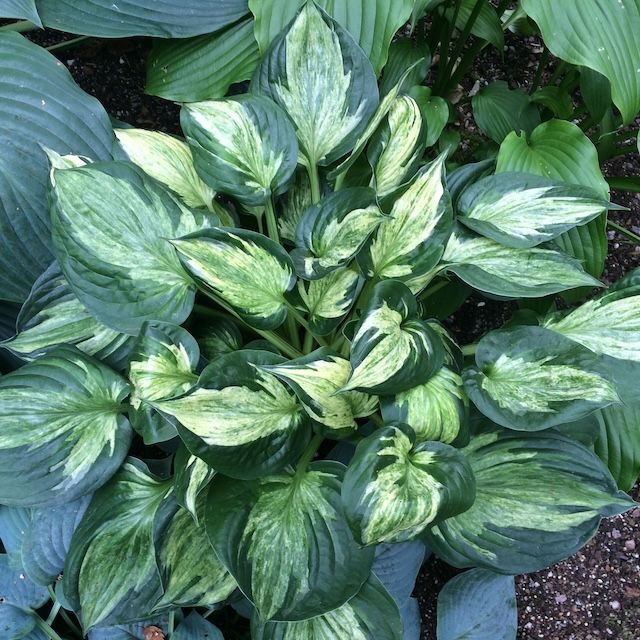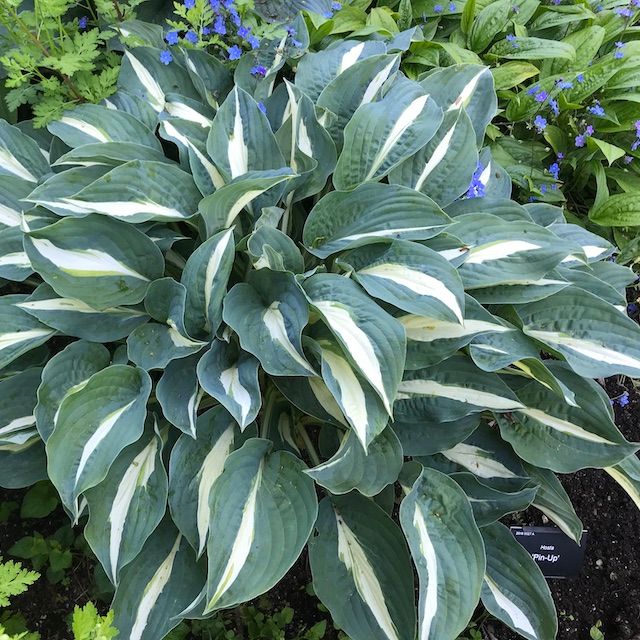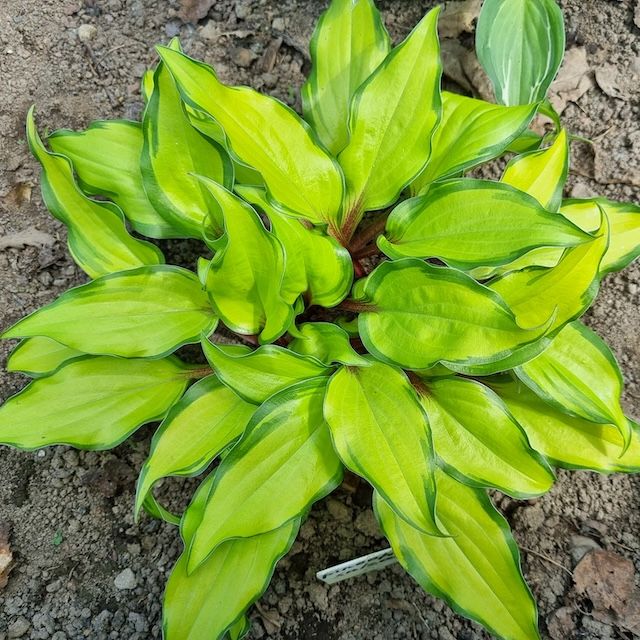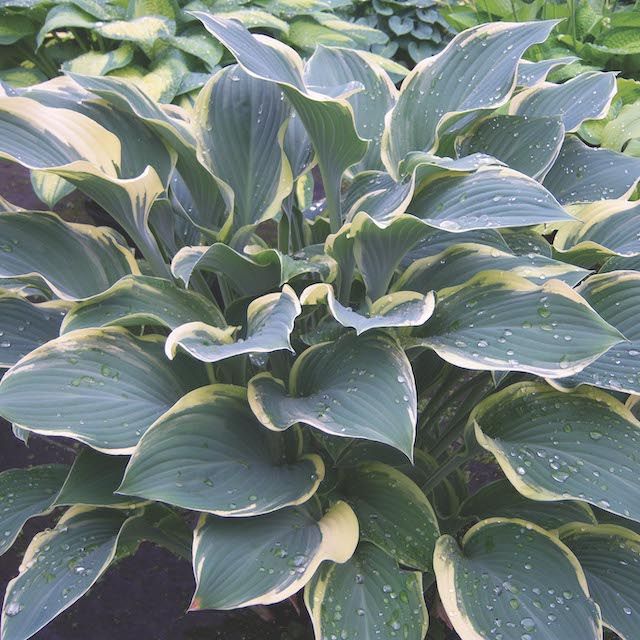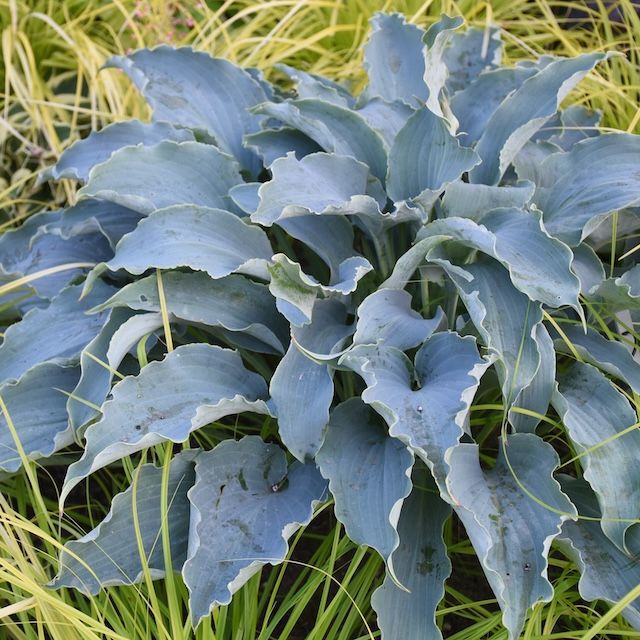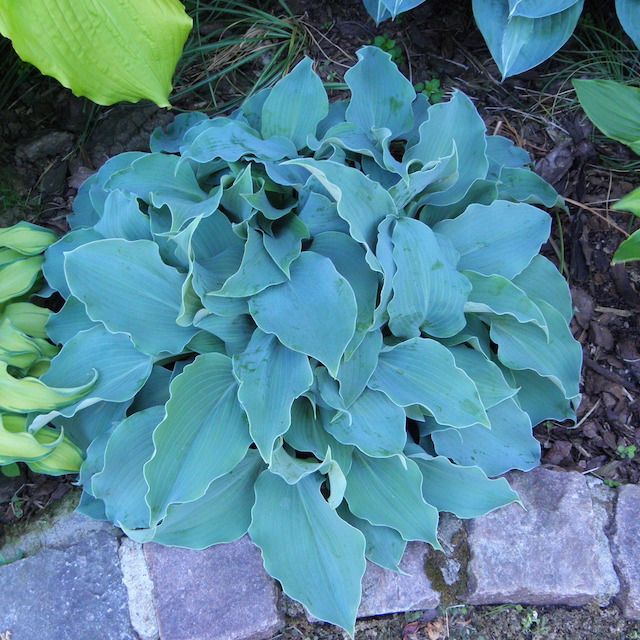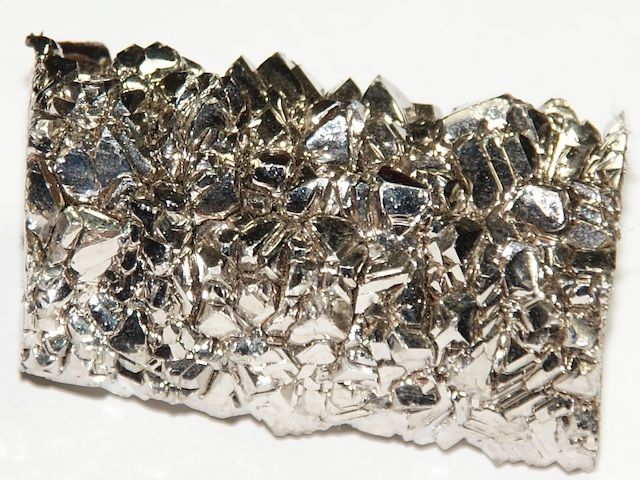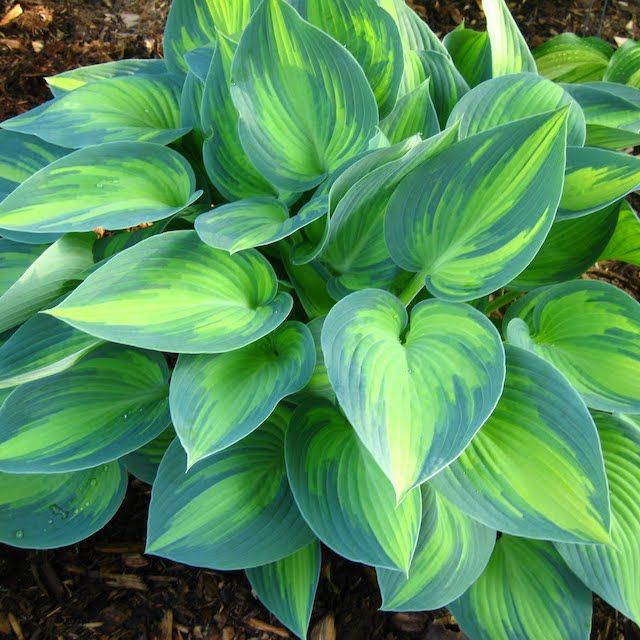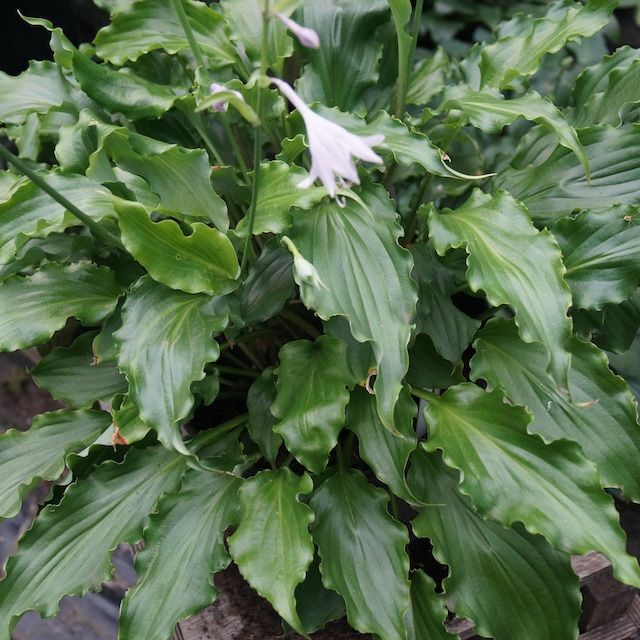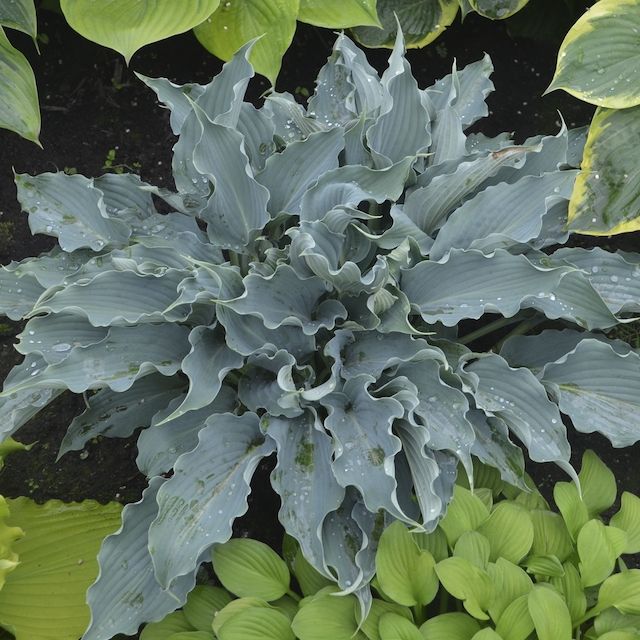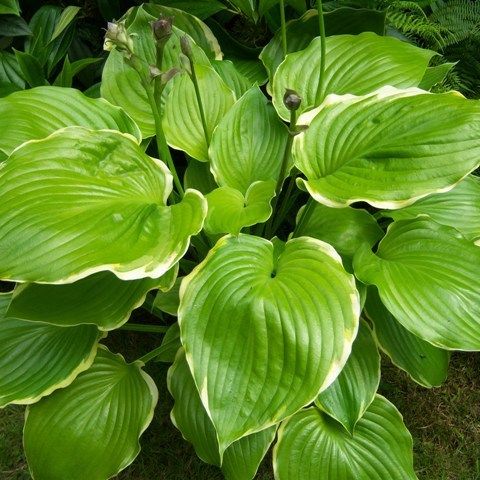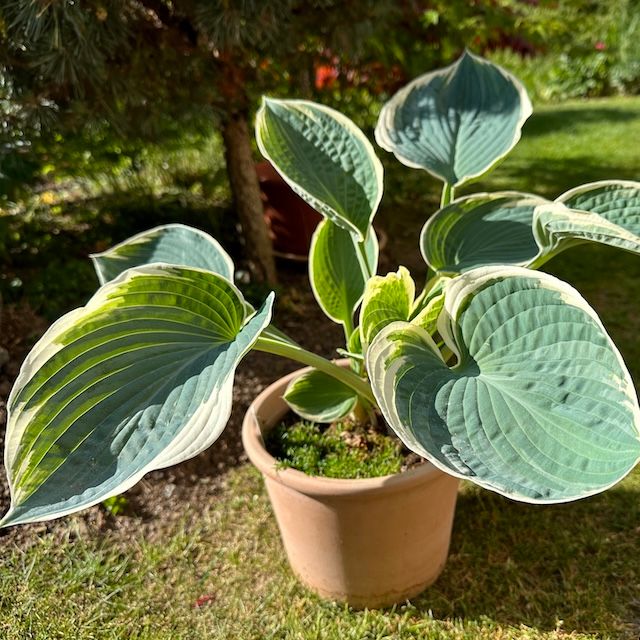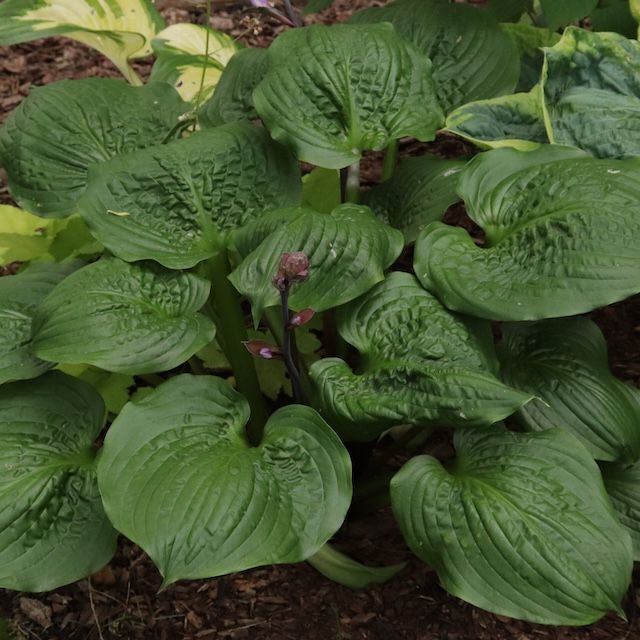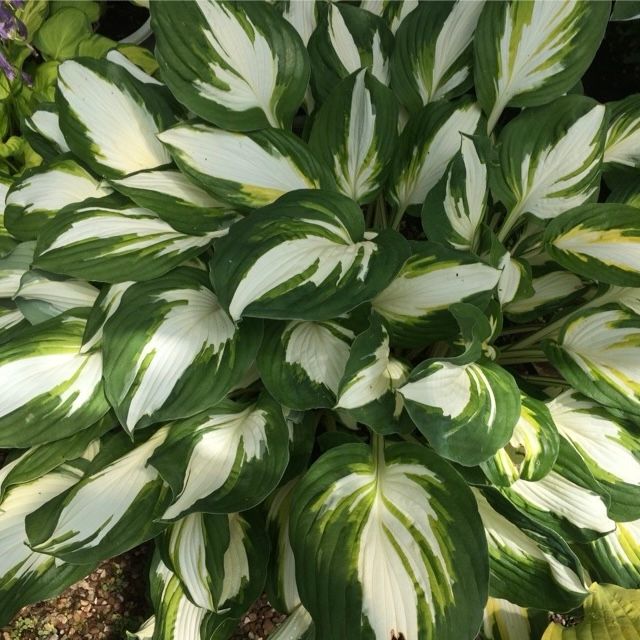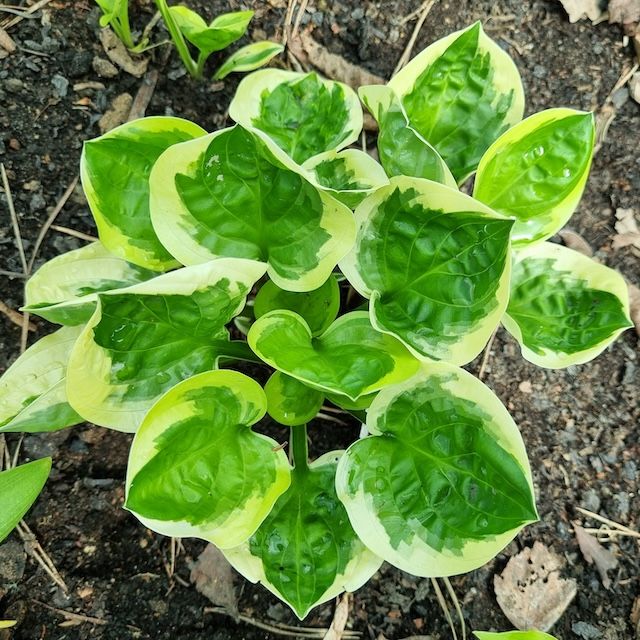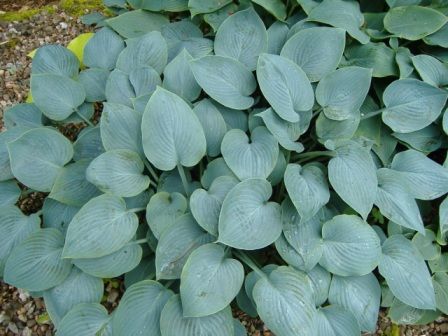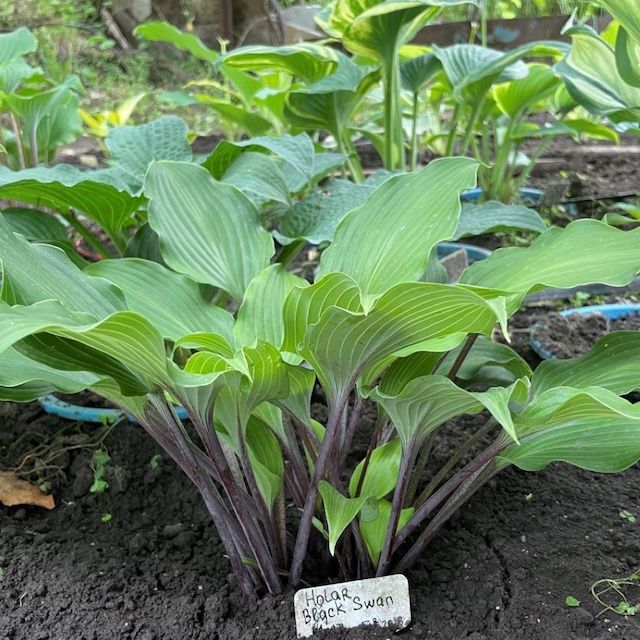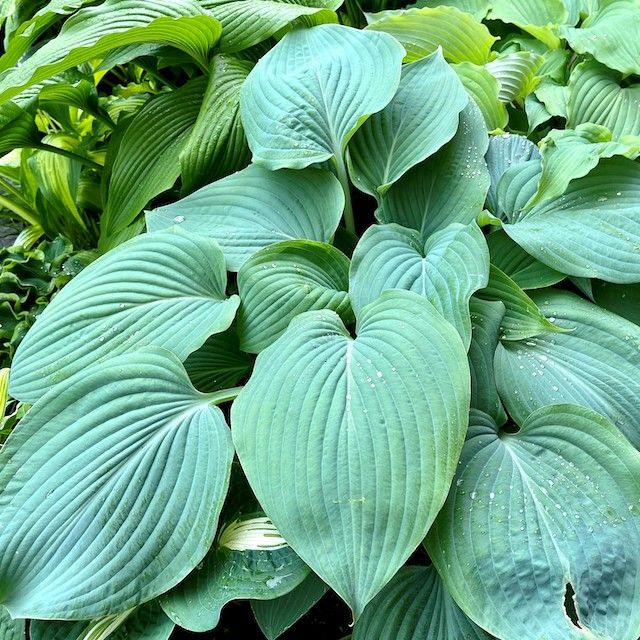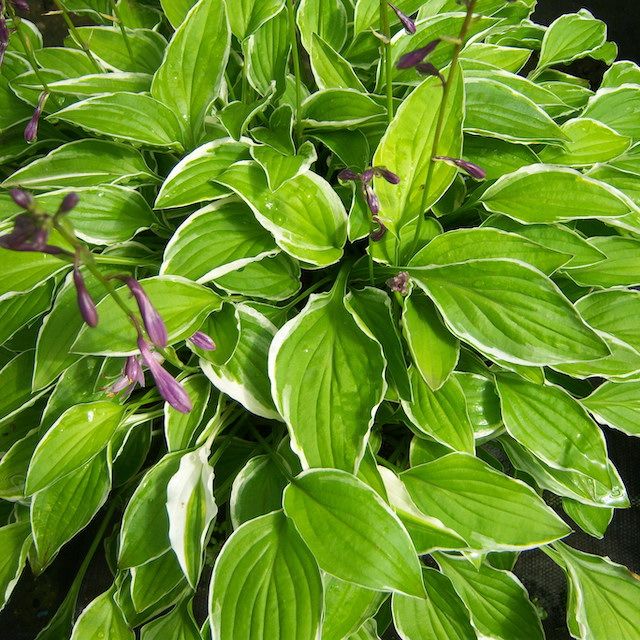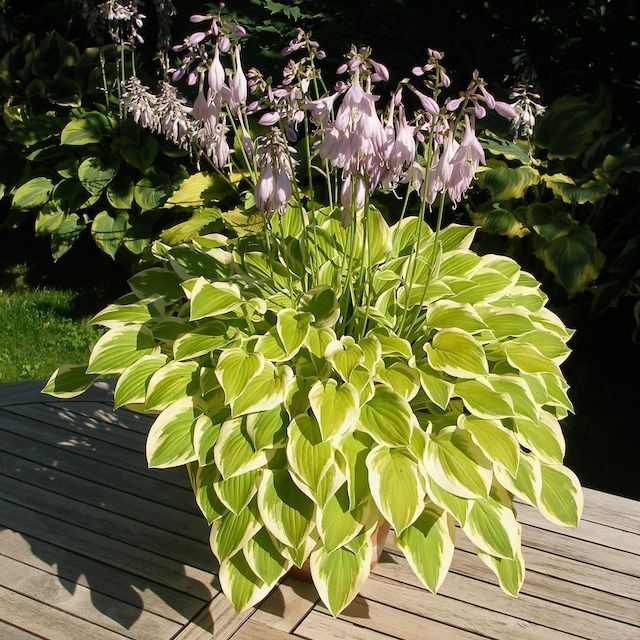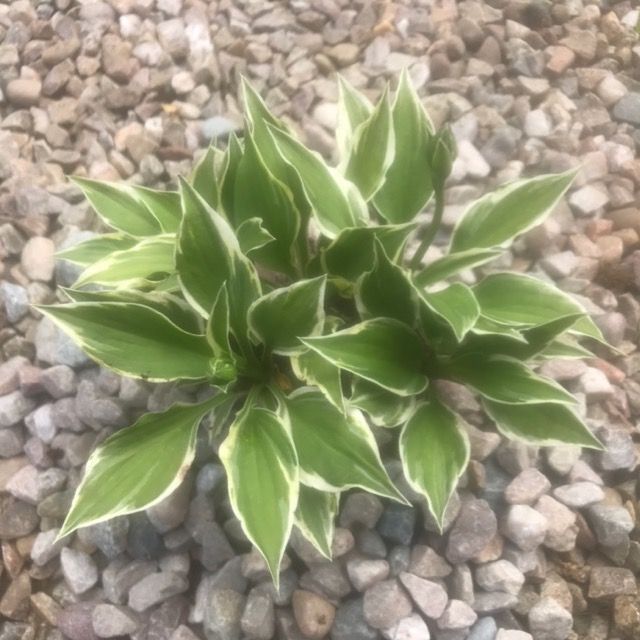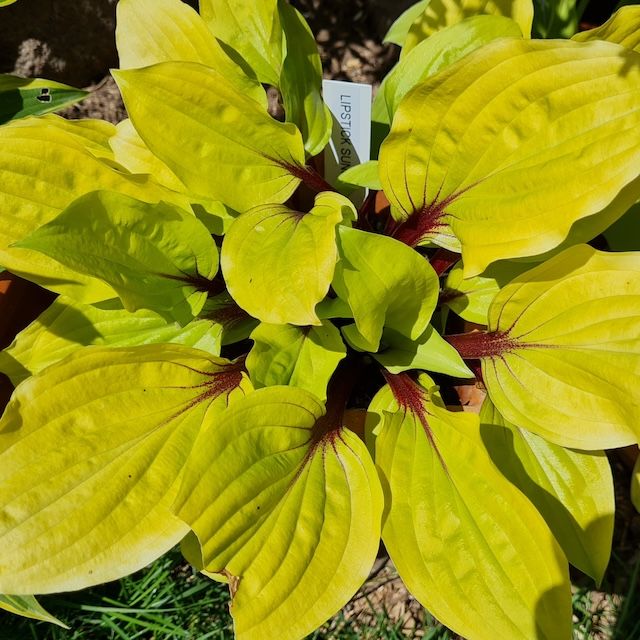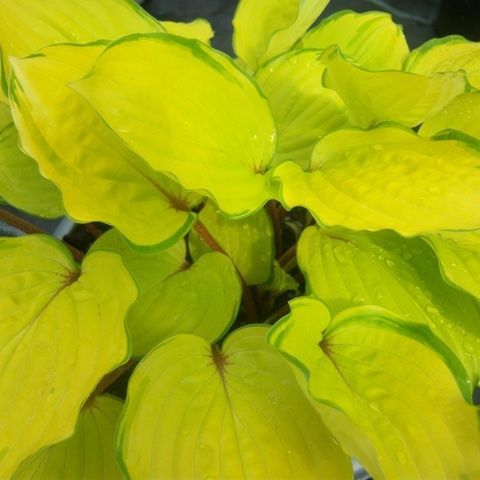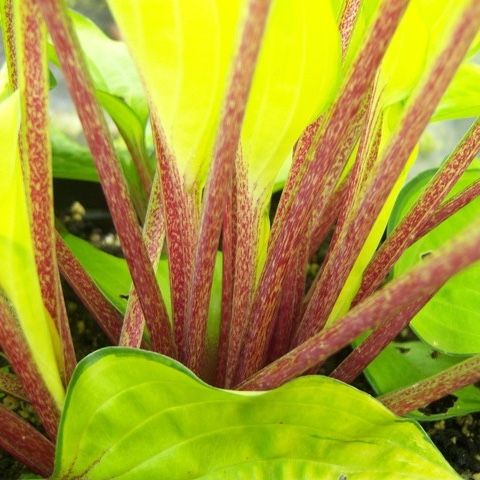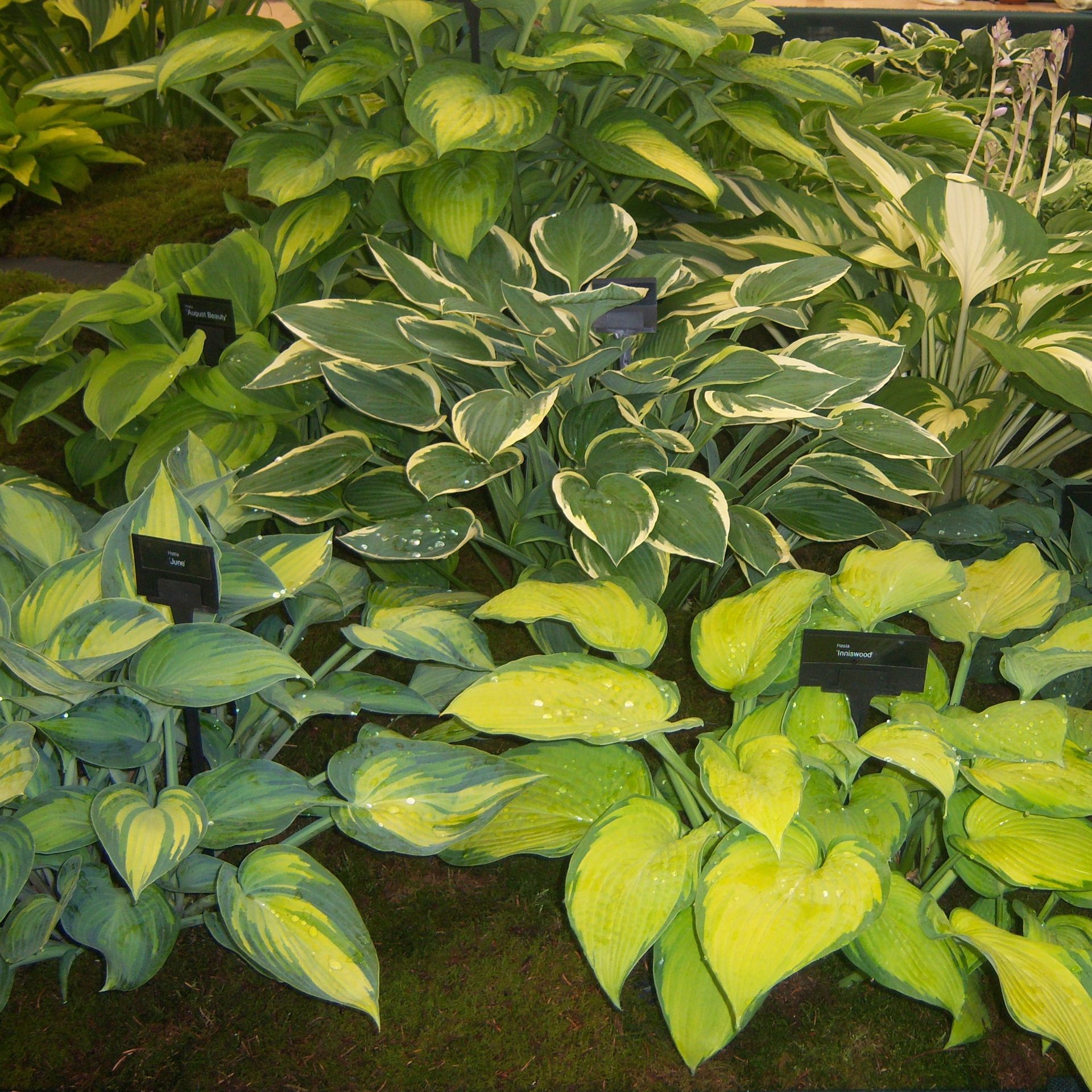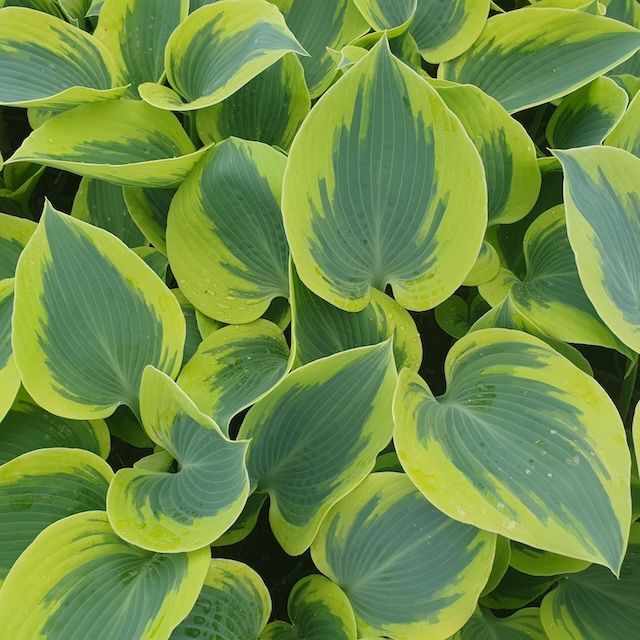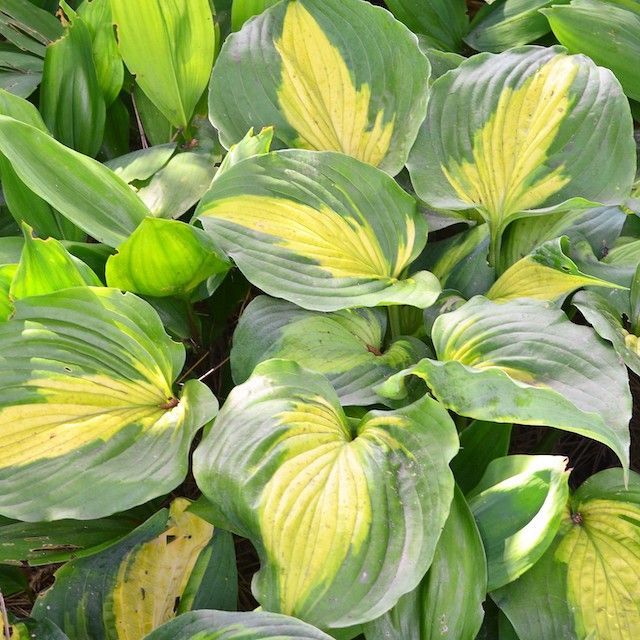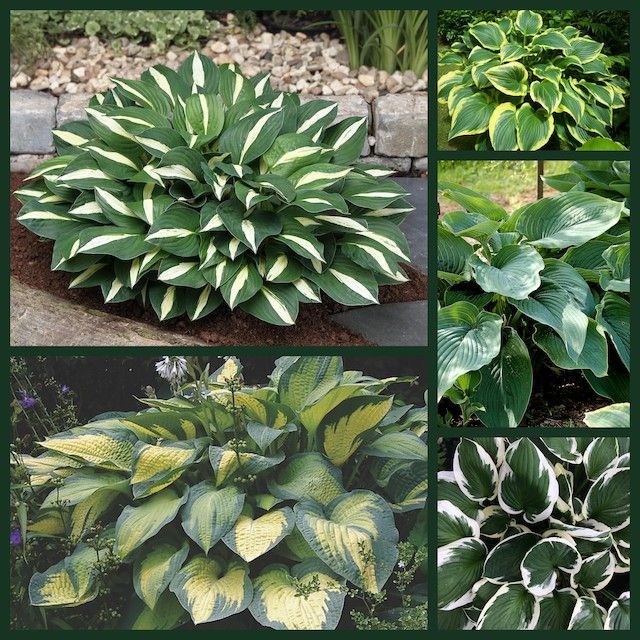About Hostas
Most gardens in the UK will have a hosta lurking somewhere. It just may be that you haven’t identified it yet! More hostas have become available in the last few years that have wonderful variegation in their leaves. Please browse our Hosta selection for fabulous examples for you to purchase.
Hostas are native to Japan, Korea and China. Some grow on hostile rock faces, some by lush river banks, and many at the forest edge. They were brought to Europe in 1700s by Phillip von Siebold and have risen hugely in popularity in the past few decades.
There are about 50 recognised species and well over 10,000 cultivars. They provide great garden foliage from April until the end of autumn, with a huge range of sizes, shapes, textures and variegations. Some make impressive specimens to stand out; others provide fabulous ground cover and landscaping plants.
Hostas are easy-growing perennials, with their foliage dying down each autumn and new, fresh shoots appearing in the spring. They are famous for being shade-tolerant and growing where many other plants will not. They are, however, quite happy in a normal garden situation and some enjoy the sunshine as long as they are kept moist. They also make great plants for pots and containers.
Hosta roots grow from a rhizome, an underground tuber-like structure. The fibrous roots are long and white. Roots meet the shoots at the crown, which varies in size according to variety and maturity.
They will reach their mature size in about five years.
All Hostas flower, some more freely than others, with bell-shaped flowers held on petioles. Flower colour ranges from pure white through all shades of lilac and lavender to deep purple. Some are fragrant.
Propagation is done by division – they do not come true from seed, although it can be fun to grow from seed and watch the results.
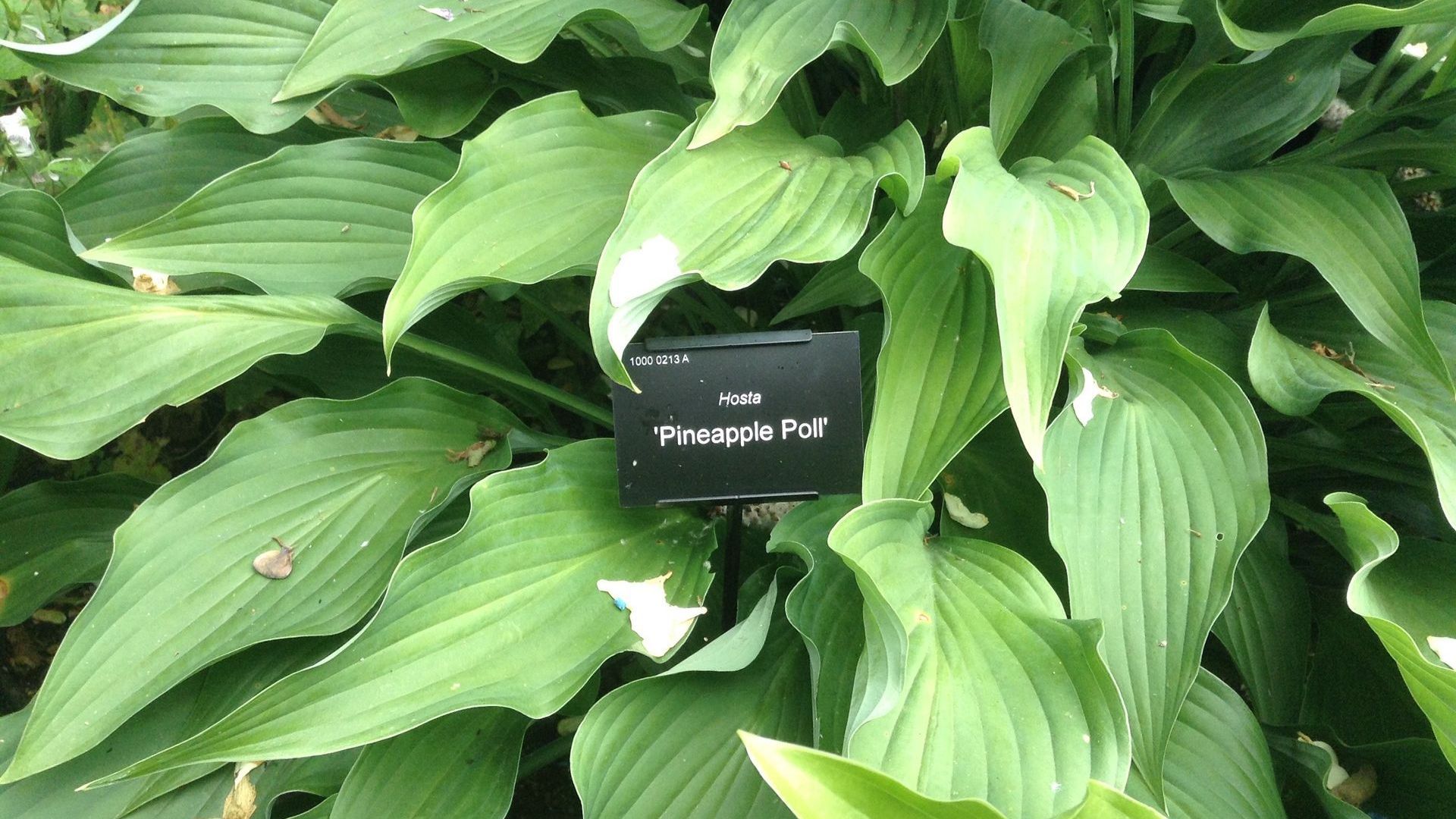
Appearance
The size of their leaves ranges from the size of a teaspoon to a dinner plate and the wide variety of blues, yellows and greens makes choosing rather difficult at times! They often look remarkable in containers and growing them this way allows you to change your outlook whenever you wish without lots of digging!
Season
All hostas are hardy perennials, which means that they come up year after year with fresh new leaves (sometimes a wonderful surprise when you had forgotten about them!). They tend to bud in the early spring - some in April, others later - and go on until early October.
Planting
They thrive in spots where other plants would not do well, they look superb in a woodland setting, alongside water features, in borders and, of course, on the patio in containers.
They are shade tolerant and grow best in open woodland with high filtered shade. Their natural companions are acers, oaks, azaleas, and Solomon’s Seal.
Flowering Hostas
All hostas flower, some spectacularly, through all shades of purple to those with white flowers. An increasing number of hostas have fragrant flowers. The flowers are sometimes held on distinctively coloured or tall scapes and can be quite an attraction in themselves!
Some people prefer to cut the flowers off when they appear to keep the leaves looking good for longer. This does not damage the hosta.
Fragrant flowered hostas are specifically listed in the online shop to make them easy to find, and the colour of flower is noted for each individual hosta.
How to Care for Your Hosta
From cultivating your hosta to efficient pest control, get these top tips on how to care for your garden’s hosta plants.
Hostas in Your Garden
Hostas require no special cultivation which is one of the reasons they are so popular, becoming known as the lazy gardener's plant. They produce a display for approximately 7-8 months of the year from the early spring and die back naturally as the winter approaches. The following spring they will sally forth again, generally bigger and better.
Planting Hostas
Choose a moist, well drained site, ideally sheltered, and with some shade. The sun tolerant varieties will be happy in more sun than other hostas. Hostas will also tolerate deeper shade, but they may not grow as large or flower as freely.
It is always worth adding plenty of organic material to your planting hole.
Dig a hole with plenty of room for the width of the hosta. It is always worth adding plenty of organic material at this stage – your hosta may grow undisturbed for several decades and deserves a good start! Mound the soil so that you can sit the hosta on top, with its roots spreading over the mound. Keep the plant at the same level as it has previously been grown, with roots all under the soil and shoots or leaf growth above soil level. Back fill the soil and water in. Keep your hosta well watered until it is established.
Caring for Hostas in Your Garden
Hostas benefit from feeding, either a granular feed in the spring, or liquid feed throughout the growing season. Stop after flowering to allow the hosta to prepare for the winter.
In the autumn your hosta will become dormant and the leaves die away. You may want to mark where it is in the garden to avoid damaging shoots early next spring.
Hostas can be happily left undisturbed in the garden for many years. If you want to, you can divide hostas in spring as the shoots emerge, or in the autumn after flowering.
Enjoy watching your hosta thrive.
Hostas in Pots
Most hostas are very happy growing in a pot long term. Avoid a big pot for a young hosta - choose a pot which will give 5-8cm room between the outer roots and the pot, then pot on after a couple of years.
Be aware that if you choose a nice round-middled pot with a narrow neck, it can be quite a battle of wills to get the hosta out after a few years of growing (Yes, we speak from experience!)
Use John Innes no. 3 or equivalent compost, with added grit or bark for extra drainage, particularly for the small growing hostas.
Water well, and avoid allowing the compost to dry out. Keep your hosta in a suitable place – most thrive in semi shade, although some enjoy more sunshine.
Your hosta should not be damaged by frost, but keep it from being overly wet in the winter. Your pot, however, may need frost protection.
Splitting Hostas
We split our hostas throughout the year and quite frankly they are not at all fussy about it! However, the most practical time to split them is in the early spring when the shoots are just appearing like small pencils through the ground. The main reason for this is that it is far easier to see where the divisions are and of course you do not risk damaging the leaves.
Work out where the split needs to be and then take a knife, a hacksaw or a spade (depending upon the size of the plant) and cut through right to the bottom of the roots. The hosta will not suffer, indeed this often makes a plant throw up new shoots and you have an extra hosta to plant elsewhere or to give away. In America hostas are known as the friendship plant because of the ability to share in this way.
However, bear in mind that Roger and Ann have a specimen of Snowden which has remained undisturbed for about 30 to 40 years and looks extremely content! So if your hosta appears to be healthy, then don't feel that you have to split it.
Slug Control
Slugs and snails like hostas. Of course they also like delphiniums, lupins and many other garden plants. But it is the hosta that they enjoy the most. We're aware that sometimes people avoid buying hostas because of the slug issue, but we are happy to say that these little critters can be controlled through a number of methods. We also provide a range of slug resistant hostas to lend a helping hand in your efforts against these pests.
More tips:
- If you use slug pellets, then start to put them out early in the year. We recommend St Valentine's Day as a date you won't forget. Then continue on through the season. Slugs will begin their reproductive cycle before the hostas are up. If you can exterminate one slug before it has reproduced, your hostas will be at much less risk.
- Encourage wildlife in your garden. Hedgehogs, thrushes and frogs will eat slugs and snails and contrary to popular belief, they won't be harmed by slug pellets.
- Any sharp mulch around your hosta will will deter a slug or snail from sliding across it. Not gentle, round pebbles, but pointy gravel, holly leaves, hair clippings etc.
- Go out at night and pick the pests up - rubber gloves, a torch, and a bucket are suggested.
- Make sure that there is as little garden rubbish around as possible. Slugs and snails love hiding in crevices and behind stones. Take their hiding places away.
- Try putting your hostas in pots, then protect the pots with vaseline or WD40 which make them greasy and prevent slugs and snails from climbing them.
- Try our Plant Elixir: Godfrey's Glorious Garlic Guard; this has been scientifically proven to send the slugs away - they really don't like garlic!
Meet Our Hosta Specialists
Ruth Penrose is our foremost hosta expert, working to provide us with advice on everything hosta.
Get in Touch for Advice
Please always feel free to call us for advice when it comes to your plants! We can provide some tailored tips about your situation on 01837 849367. We love hearing from our customers!
Join Fellow Hosta Enthusiasts!
For those who enjoy hostas, there is an opportunity to join the British Hosta and Hemerocallis Society. Outings, friends, newsletters, information, new hosta plants, access to flower shows, and many other benefits - all for just a small annual subscription!
Visit Our Gardens
Bowdens is home to two nationally recognised gardens, including one dedicated to hostas. We welcome you to take a tour to enjoy these beautiful plants alongside ferns, bamboos, and more. We can even provide customisable tour options, perfect for hosta lovers and gardening enthusiasts.
Don't Forget Bowdens' Gardening Talks!
Our gardening talks are available throughout the year! Whether you want to get the ins and outs of hosta care or learn more about creating a show garden, we’ll be happy to visit your garden club or special event.


